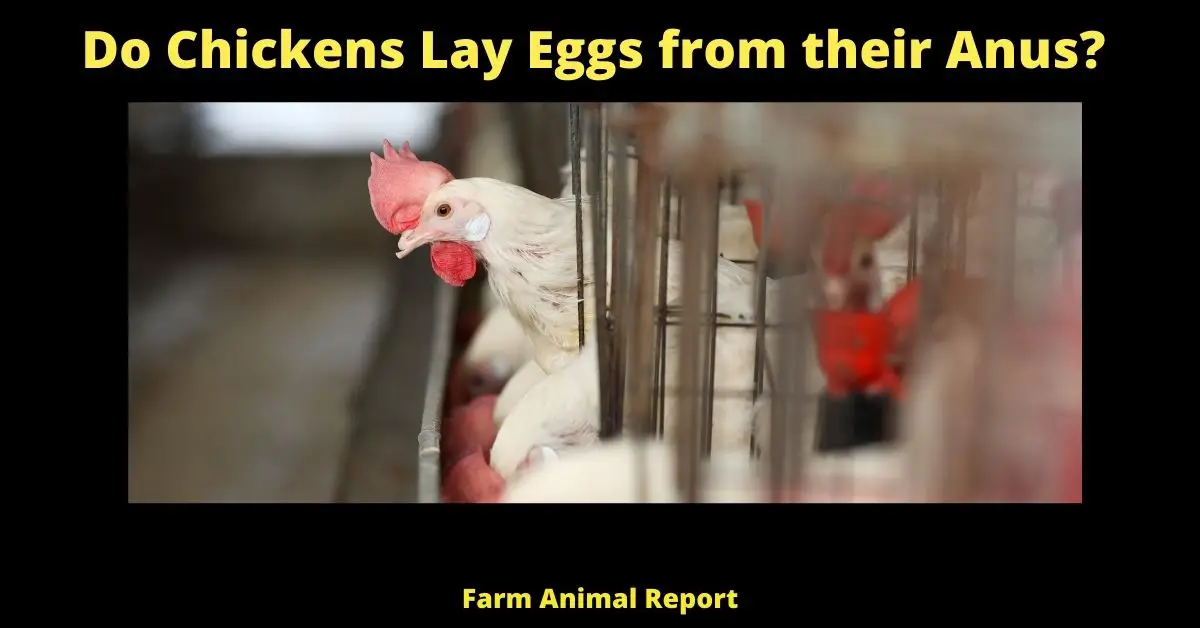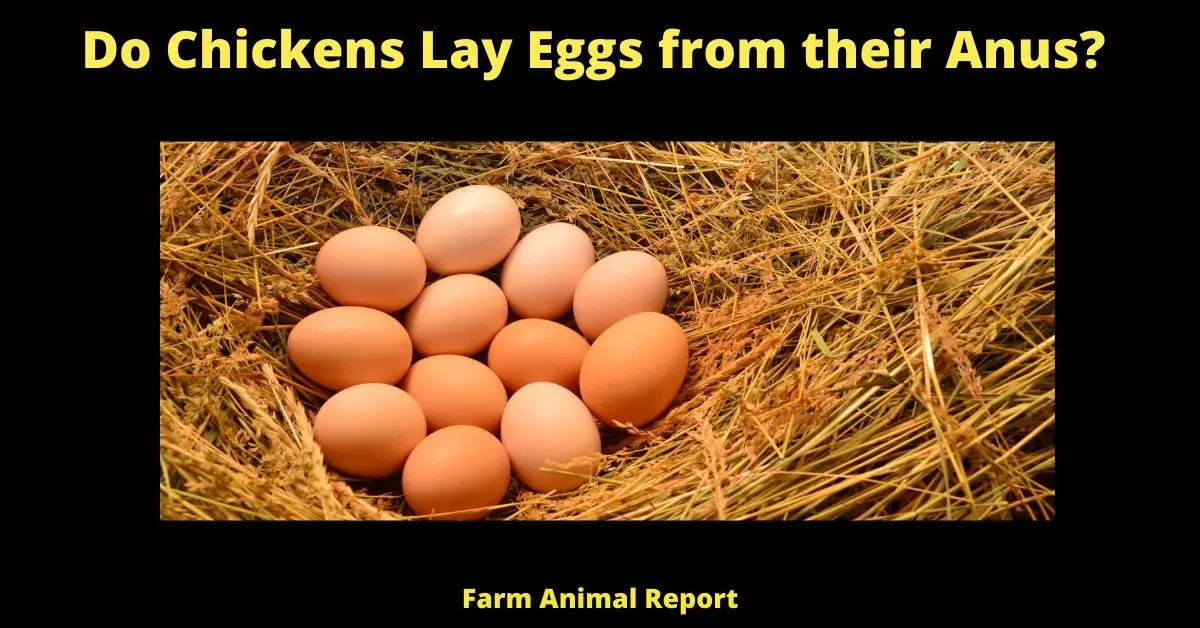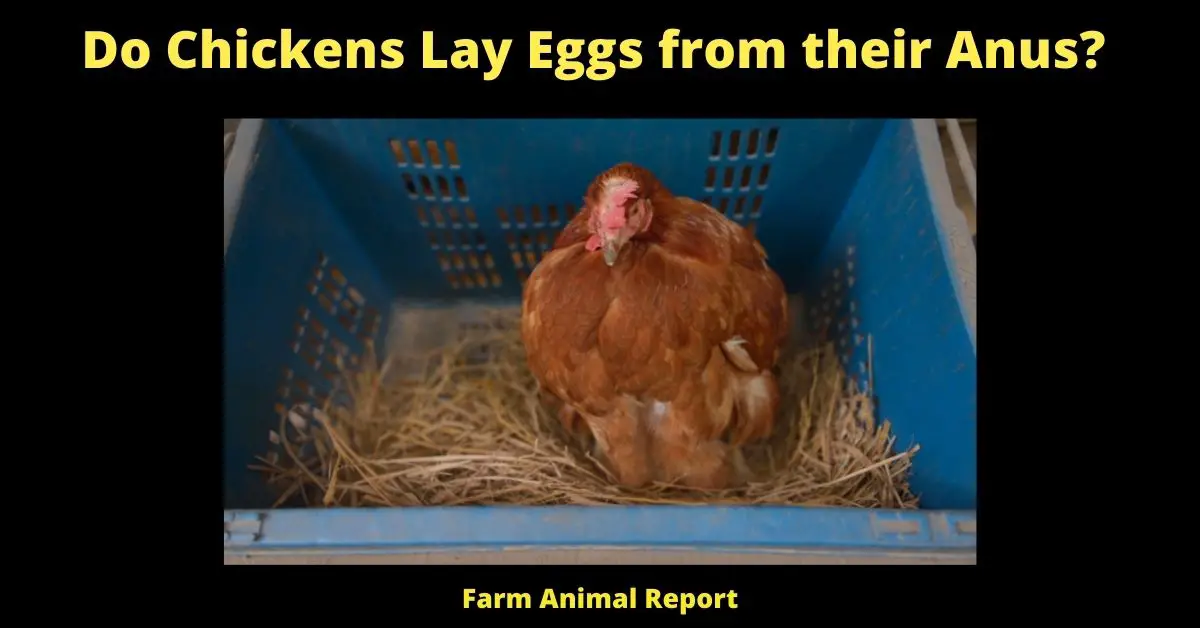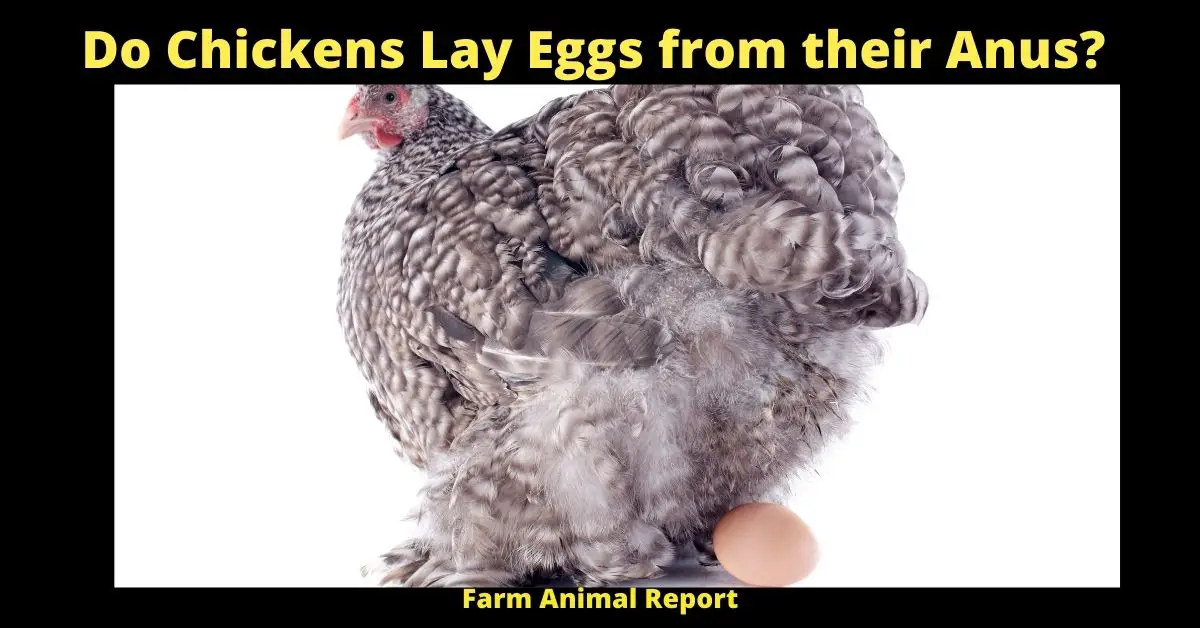Do Chickens Have Vaginas – Chickens’ eggs come out of a chicken’s vent. The vent is an opening located on the chicken’s underside, between their legs. A chicken’s eggs travel down their oviduct and leave through the vent. Both the Vagina and the Intestine both open into the cloaca and both leave at the vent, just at different times.
Chickens have a cloaca, which is an all-purpose opening that they use for reproduction, urination, and defecation. The cloaca is
Do Chickens Have Vaginas | Do Chickens Have Butts
Do Chickens lay eggs from their anus? This is a question that has long been debated by farmers and poultry enthusiasts alike. Do Chickens Have Butts
Some people swear that Chickens do in fact lay eggs from their anus, while others believe this to be nothing more than an urban legend. In this blog post, we will explore the truth behind this myth and determine once and for all whether or not Chickens lay eggs from their anus!
Paragraph For Amazon Resources for Raising Meat Chickens
What is the Development Path of a Chickens eggs Through the Hens Body | Chicken Butt
The forming of an egg begins in the hen’s oviduct. The oviduct is a long, coiled tube that sits just below the kidney on each side of the hen’s body. As an egg travels down the oviduct, it grows in size and develops its hard outer shell. The process of adding the hard outer shell to the egg takes about 20 hours.
The oviduct is lined with three different types of glands. The first type of gland secretes a protein-rich fluid that forms the egg’s white, or albumen. The second type of gland provides the egg’s yolk with its yellow color and fat content. Do Chickens Lay Eggs from their Anus?
And finally, the third type of gland adds the egg’s final layer, the chalaza. The chalaza is a spiral of tough tissue that holds the yolk in place at the center of the egg. Jump to 12 Ways to Make Money by Chicken Farming **CHARTS**
Once an egg is fully formed, it is ready to be laid. The hen will push the egg out through her vent, which is located just below her tail. The egg will then pass through the hen’s cloaca before it is laid.
It is a common misconception that chickens lay eggs from their anus. While the vent does serve as both the opening for the reproductive and digestive tracts, the two systems are actually quite separate. Eggs are formed in the hen’s oviduct and are laid through her vent. Her cloaca, or anus, is located just below the vent.
While it may seem like chickens lay eggs from their butt, they actually don’t! The next time someone tells you that chickens lay eggs from their anus, you can set the record straight.
Do Chickens Have Butts?
Chickens have a cloaca, which is an opening that serves as the exit for digestive, urinary, and reproductive tracts. The cloaca is located at the base of the chicken’s tail, and yes, this means that chickens do have butts. However, contrary to popular belief, chickens do not lay eggs from their butts.
The egg travels down the oviduct (chicken uterus) and is laid through the cloaca. While it may seem like the egg is coming out of the chicken’s butt, it actually isn’t. Chickens also use their cloaca to release feces (poop), so it can be easy to see how this misconception came about!
How does the Chicken Reproductive System work? Mating (How do Chickens Mate )
The chicken Mating Process Starts with the Cock chasing and Flapping his wings at the Hen to get her Attention.
He will then mount her and they will mate. After Mating, the male chicken will usually move on to another Hen.
The Fertilized eggs are then laid by the Hens in a Nest. It takes about 21 days for the chicks to Hatch. The Chick’s sex is determined by the Chromosomes of the father, not the Mother.
What happens if a Chicken does not Mate?
If a chicken does not mate, she will still lay eggs but they will be infertile and will not hatch into chicks. Some people choose to have pet chickens that do not mate so that they do not have to worry about them reproducing. However, these chickens may still go through the motions of mating even if they are not actually reproducing.

Courting
Chickens’ courtship rituals consist of the male chasing the female and attempting to attract her attention. He will flap his wings and make loud noises in an effort to get her to pay attention to him. If she is interested, she will allow him to mount her.
Mating
The chickens mate by the male mounting the female from behind. He will hold on to her with his claws while he rubs his vent, which is located at the base of his tail, against hers. This action transfers sperm from the male’s body into the female’s reproductive tract. After they have mated, the male usually moves on to another female.
Fertilization
Once the eggs are fertilized, they are laid by the hen in a nest. It takes about 21 days for the chicks to hatch. The sex of the chicks is determined by the chromosomes of the father, not the mother.
How does the Chicken Reproductive System work? Hen
The parts of a female chicken, a hen consist of;
- Ova – The Ova are produced in the ovary and are stored in the oviduct.
- Oviduct – The long, thin tubes where the egg is formed and travels through until it is laid.
- Shell Gland – This is where the eggshell is added to the chicken egg.
- Uterus – This is where the embryo develops before it hatches.
- Vagina – This is what the male Chicken enters during mating.
- Cloaca – The Cloaca is an exit and entrance for both solid waste and eggs. It also plays a role in reproduction as this is where sperm enters during mating, and where eggs are laid.
How does the Chicken Reproductive System work? Roosters
- Testes – The testes are where sperm is produced.
- Sperm Tubes – The sperm tubes are where the sperm travel from the testes to the cloaca.
- Rectum – The rectum is where solid waste is stored before it is passed through the cloaca.
- Cloaca – The Cloaca is an exit and entrance for both solid waste and eggs. It also plays a role in reproduction as this is where sperm enters during mating, and where eggs are laid.
How long does it take for a Hen to Produce an Egg?
It takes a hen about 21 days to produce an egg. This process starts when the hen’s body forms a yolk inside her ovary. Once the yolk is fully formed, it travels down the hen’s oviduct and is attached to albumen (egg white) and covered in shell membranes. The egg then passes through the hen’s cloaca (vent) and is laid.
It takes a chicken 24-26 hours to produce an egg. This process starts when the chicken’s body forms a yolk inside her ovary.
Once the yolk is fully formed, it travels down the chicken’s oviduct and is attached to albumen (egg white) and covered in shell membranes. The egg then passes through the chicken’s cloaca (vent) and is laid.

How long does it take for a Hen to Lay eggs?
The actual laying process lasts about 20-30 minutes.
Hens generally lay one egg per day, although they may lay more or less frequently depending on their age, breed, health, nutrition, stress levels, daylight hours, the season of the year, and whether they are molting (losing feathers). Most hens will take a break from laying during mol
However, there are some Interesting Facts about Chicken Reproduction that you may not know
For example, did you know that a rooster’s sperm can keep an egg fertilized for up to three weeks?
Once a Cloaca Kiss takes place, the male’s sperm will travel up the female’s oviduct and can remain viable there for up to three weeks. This means that a rooster can mate with a hen and she may not lay her eggs for several weeks later.
So how does the Egg actually get out of the Chicken’s Body?
The process of laying an egg is called oviparous deposition. The egg first passes through the cloaca (vent) and then is pushed out by muscular contractions of the oviduct walls.
Why is The process of laying an egg is called oviparous deposition?
Oviparous animals are those that lay eggs, as opposed to giving birth to live young. Chickens are oviparous animals, meaning they lay eggs.
Chickens are one of the only animals to produce two types of eggs – fertile and infertile. Fertile eggs can be incubated and will hatch into chicks, while infertile eggs cannot be incubated and will not hatch.
How do chicken eggs get fertilized?
The process of chicken reproduction is called internal fertilization because it takes place inside the female’s body. During mating, the male chicken will transfer its sperm to the female’s cloaca (vent). The sperm then travel up the oviduct to fertilize the egg inside the hen’s body.
Does it hurt a Chicken to lay an egg | Chickens lay Eggs
There is no definitive answer to this question as chickens do not have the ability to communicate pain in the same way that humans do. However, it is generally accepted that chickens do not experience pain when they lay eggs.

How many butt holes does a chicken have? (Vent)
A chicken has two holes – the cloaca (vent) and the egg hole. The cloaca is an exit and entrance for both solid waste and eggs. The egg hole is located at the end of the oviduct and is where eggs are laid.
What is a chicken egg hole? (Sick Baby Chick) (Chicks)
The egg hole is located at the end of the oviduct and is where eggs are laid. Once an egg passes through the cloaca (vent), it is pushed out of the chicken’s body through the egg hole.
Chickens can get Sick
- Can cause sick baby chick
- Chicks can develop pasty butt
- Pecking at pasty butt chicks
- Diarrhea chicks pasty butt
- Feed Causing pasty butt chickens
- The majority of Hen chickens lay eggs
- Adult hens lay eggs
- Brown chicken eggs
Anatomy of a Female Chicken / Hen
The anatomy of a female chicken, or hen, is quite complex. This common domesticated bird is highly specialized for foraging, egg-laying, and brooding (or incubating) eggs. Hens have a unique skeletal system, a specialized digestive tract, reproductive organs, and sensory organs that all work together in perfect harmony to enable a hen to survive in the wild.
The skeletal system of a hen is made up of 206 bones and several cartilages. It is divided into the axial skeleton (comprised of the skull, vertebral column, and ribs) and the appendicular skeleton (comprised of the wings, legs, and feet).
The skull of a hen is made up of 14 bones, which include the mandible, hyoid, and cranium. The vertebral column consists of 27 vertebrae, divided into the cervical, thoracic, lumbar, and caudal regions. The ribs are attached to the vertebral column and protect the chest cavity.
The wings consist of the humerus, radius, and ulna, which are connected to the carpometacarpus. The legs are made up of the femur, tibiotarsus, tarsometatarsus, and toes. The feet contain four toes, with a fourth toe on the hind foot that is used for grooming and perching.
The digestive tract of a hen is composed of the crop, proventriculus, gizzard, small intestine, cecum, and large intestine. The crop is a pouch that serves as a storage area for food. The proventriculus is the first part of the stomach that produces the enzyme pepsin.
The gizzard is a muscular organ that grinds food with the help of ingested stones. The small intestine is a long, coiled tube that absorbs most of the nutrients from the food. The cecum is located at the end of the small intestine and contains bacteria that break down indigestible material. The large intestine is the final part of the digestive tract, where water is absorbed and the waste material is eliminated.
The reproductive organs of a hen include the ovary, oviduct, and cloaca. The ovary is a small organ located near the kidney that produces eggs. The oviduct is a long tube connected to the ovary, where the egg is formed and travels through before being laid. The cloaca is the opening where the egg is laid and where the digestive, urinary, and reproductive systems meet.
The sensory organs of a hen are the eyes, ears, and bill. The eyes are located on either side of the head, and contain two pupils that allow the hen to see color. The ears are located just behind the eyes, and are used to detect sounds. The bill is a long, hard structure made of keratin, and is used for pecking, preening, and scratching the ground.
The anatomy of a female chicken, or hen, is complex and highly adapted for its environment. Its 206 bones, specialized digestive tract, reproductive organs, and sensory organs all work together to allow the hen to survive in the wild.
Other Thoughts
- do eggs come out of a chickens bum
- do chicken eggs come out of their anus
- how many holes does a chicken have
- do chickens have a vagina
- do chickens lay eggs out of their anus
- does a chicken have a vagina
- chicken anus
Final Thoughts – Do Chickens Have Butts
As you can see, there is a lot more to chicken reproduction than meets the eye! Chickens are fascinating creatures and their reproductive process is just one of the many things that make them unique. If you have any further questions about chickens or their eggs, be sure to ask your local farmer or poultry expert. Thanks for reading!






